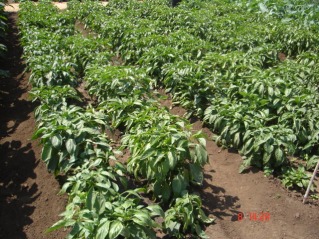The expertvillage has a series of garden videos that might be of help to beginning gardeners. If you find anyone of particular interest, please leave a comment here with the link to the video.
From Rev. Wasike
I just wanted to give you all a quick update on our school garden project. The children and community volunteers managed to prepare the garden and we’ve already planted suku mawiki, a local kale crop, and it is doing quiet fine. We will take photos by end of the week. We are also scheduled to plant more crops by next week, as I am to go with more seedlings on Saturday. God willing, we are hoping to plant onions, maize and tomatoes next.
From Malcolm
Malcolm kindly sent up the following information about how to do proper soil preparation.
The first thing you have to do is make sure you keep plenty of old newspaper at hand. If you do not have plenty of old newspapers, send the children out to various offices and homes and see if they can collect some.
Soil preparation:
1.Once the beds have been cleared, put the cleared weeds aside in a warm place and add some soil over them and add a little water.
2.If you have livestock around the school, please collect the droppings especially those of chickens. Mix these droppings with the soil and add on top of the beds. If you have goats and sheep, collect the marbles and throw over the soil. For cattle droppings, if it is fresh, mix it directly in with the soil. If dry, break up the droppings and then mix it in with the soil.
3. Take wood ash after a fire and lightly mix in with the soil. Use 5 kg of ash for every half-acre and spread over the soil while adding any of the items from above (old weeds or livestock droppings).
4. Water the soil. Cover the beds on the next day with 3-5 layers of wet newspaper. Then make holes at the required plant spacings and plant the seeds. Add stone weights or timber weights in the rows to prevent the newspaper from blowing away. I will suggest you use Ken's drip irrigation under the newspaper.
From Malcolm
Malcolm kindly sent up the following information about how to divide how to speed the germination process.
To speed the germination process, soak a paper towel or a cloth in water. Then put the seeds in water for 1 hour and then onto the paper towel or cloth and wrap and keep in a warm place but make sure it stays damp.
Cabbage or kale: overnight and in the morning plant as normal. If there are shoots visible, handle with care and plant carefully.
Eggplant and Pepper: 1 day or until you see the seeds starting to bloat up and plant as normal
Tomato: overnight and in the morning plant as normal. If there are shoots visible, handle with care and plant carefully.
Swiss chard, green beans or okra you can just soak them for 6 hours and then plant as normal.
From Malcolm
Malcolm kindly sent up the following information about how to divide up our 1/2 acre garden lot and how to plant the seedlings.
Start with this first:
Divide the plot like this: 400 sq m for Swiss chard, eggplant and green peppers, cabbages and green beans or okra.
On the outsides of each bed on the north side: plant tomato plants and on both of the two sides, plant marigolds as a natural insect repeller.
In between the cabbage seedlings: plant a radish crop, which will act as a natural insect repeller. In between the rows of spinach: plant some garlic or spring onions to also act as a natural insect repeller.
For the eggplant you will plant as follows:
2 eggplants in a row with a space of 40 cm from stalk to stalk and then a 50 cm space. From this 50 cm space plant 2 green pepper plants at 35 cm from the edge of the 50 cm mark and then again at 70 cm from the edge of 50 cm mark. Then leave another 50 cm space and repeat the process with eggplants, then green pepper till you reach the end of the bed. See photo.
If you cannot get cabbage, then use kale.

 RSS Feed
RSS Feed